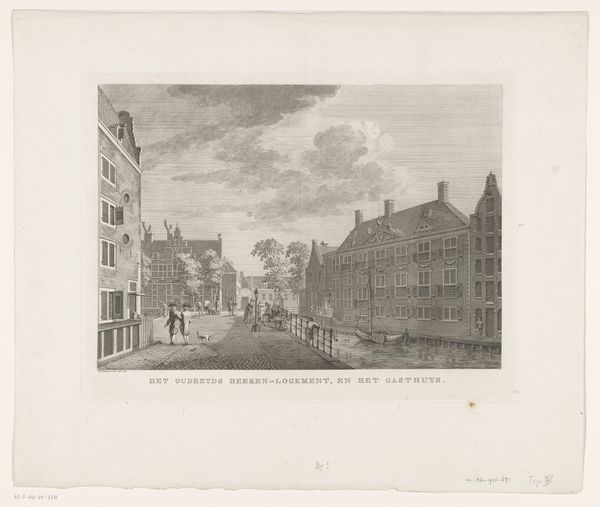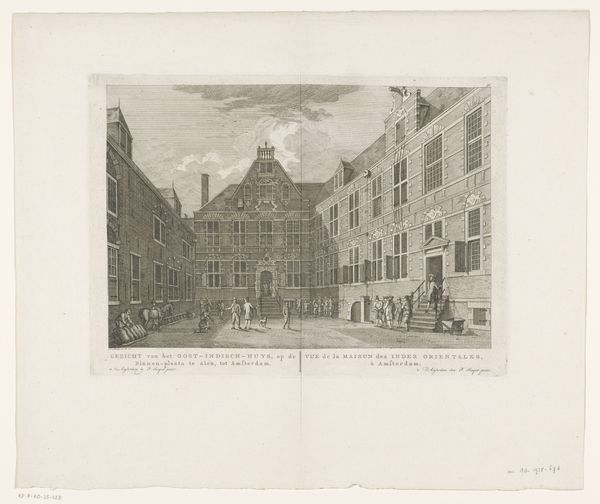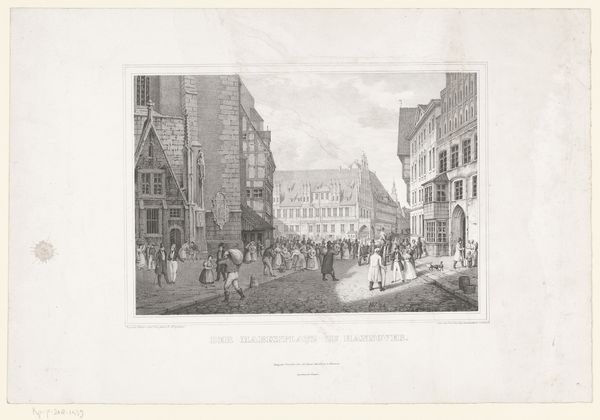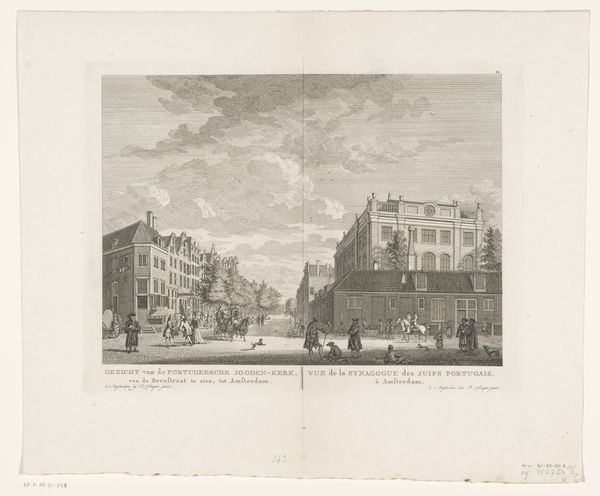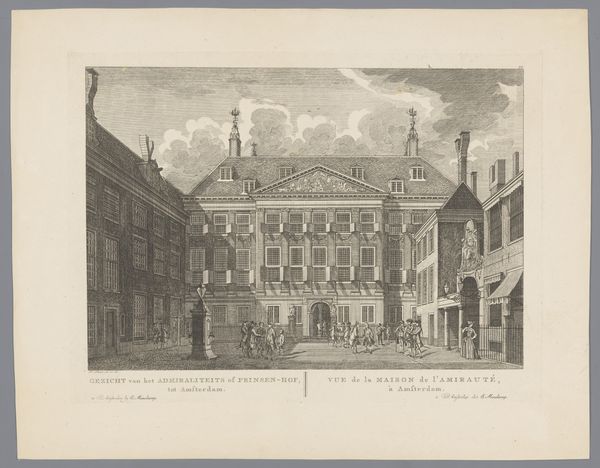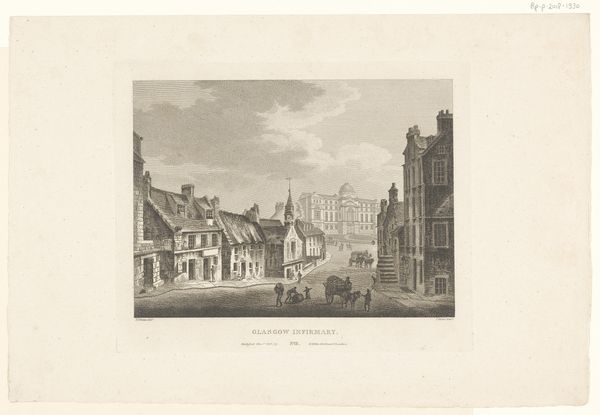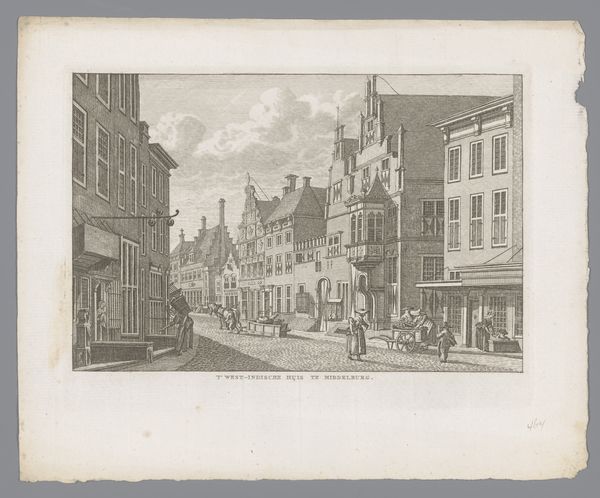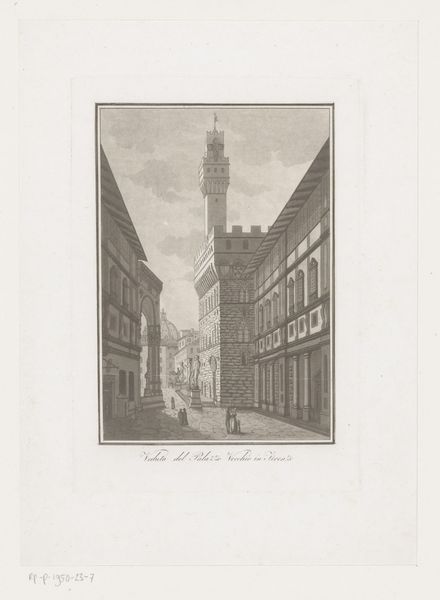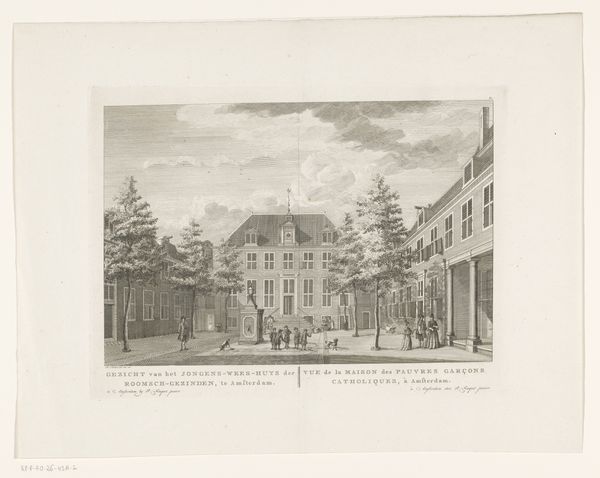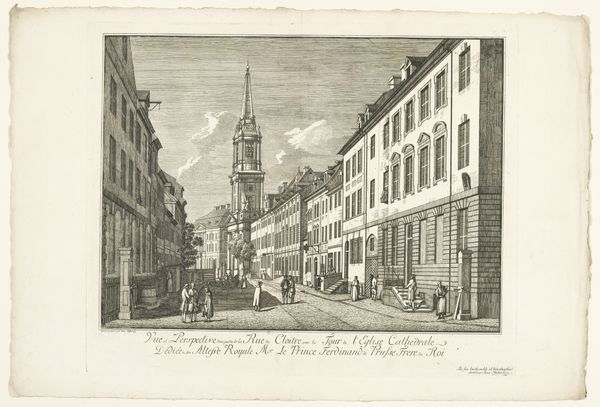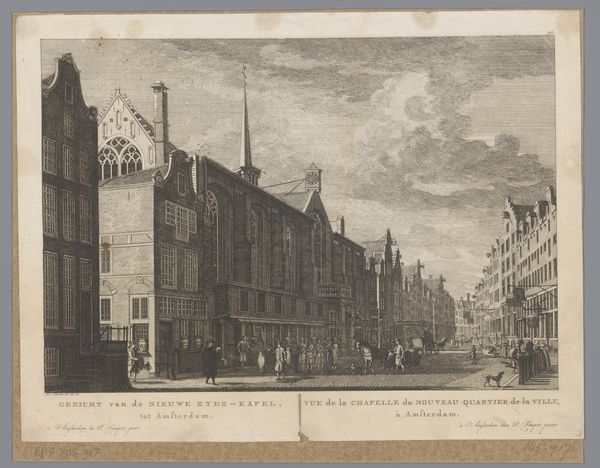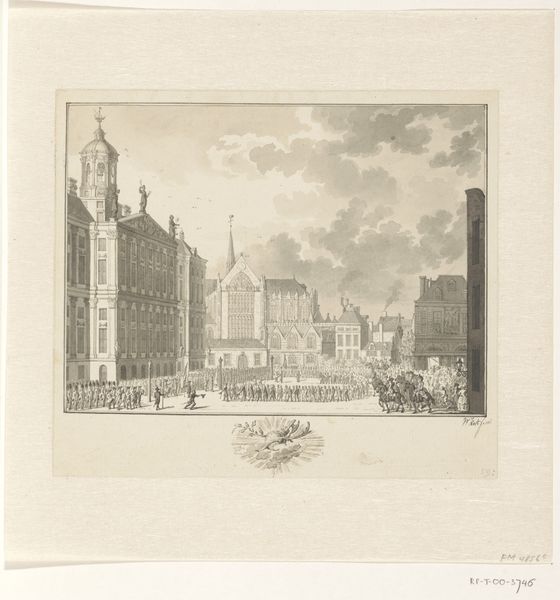
drawing, print, paper, engraving
#
drawing
#
baroque
# print
#
paper
#
cityscape
#
engraving
Dimensions: height 177 mm, width 211 mm
Copyright: Rijks Museum: Open Domain
Curator: This engraving, entitled "Gezicht op de Oostkerk te Middelburg, 1743," presents a view of the East Church in Middelburg. Jan Caspar Philips created it sometime between 1746 and 1760, so we're looking at an image rendered a few years after the fact. Editor: It’s a strangely calming piece. The crisp lines of the buildings, the clear sky, they all give a sense of order and tranquility, despite depicting a public space. The church itself dominates with an almost mystical presence. Curator: Well, the baroque style does aim for grandeur, right? Beyond aesthetics, Philips offers a slice of 18th-century Dutch society. You see the church as a key component but also the surrounding architecture; and even people of various social standings going about their daily lives in front of it. This was, of course, during the Dutch Republic's decline, a period rife with social commentary within the arts. Editor: Indeed, I notice the symbols of civic pride represented through the church dome that anchors the entire scene, a place for spiritual and community coming together. How interesting to show them all connected in such a way! Curator: What interests me further is Philips' choices on printing—engraving here is more than mere reproduction. Its graphic qualities suggest how public perceptions were strategically shaped in that era, subtly influencing civic identity by the art market. Editor: Good point; that visual rhetoric matters greatly. I am struck too, by what this church meant within the spatial environment of Middelburg at the time and for folks viewing it today. Does it mean the same thing across centuries? I am so fascinated by how cultural meanings shift with new contexts! Curator: Right, exactly—it is about how those meanings get established and shift within the social fabric, making a cityscape more than just buildings! It becomes a stage for collective identity. Editor: Precisely! A little world teeming with symbolism. Gives one plenty to think about the intersection of community and iconography within public spaces. Curator: For me, it underscores the importance of analyzing this engraving as not only artwork but also historical document—part of how urban centers legitimized authority visually in early modern Europe. Editor: A potent reminder that every image bears a history beyond its surface!
Comments
No comments
Be the first to comment and join the conversation on the ultimate creative platform.
